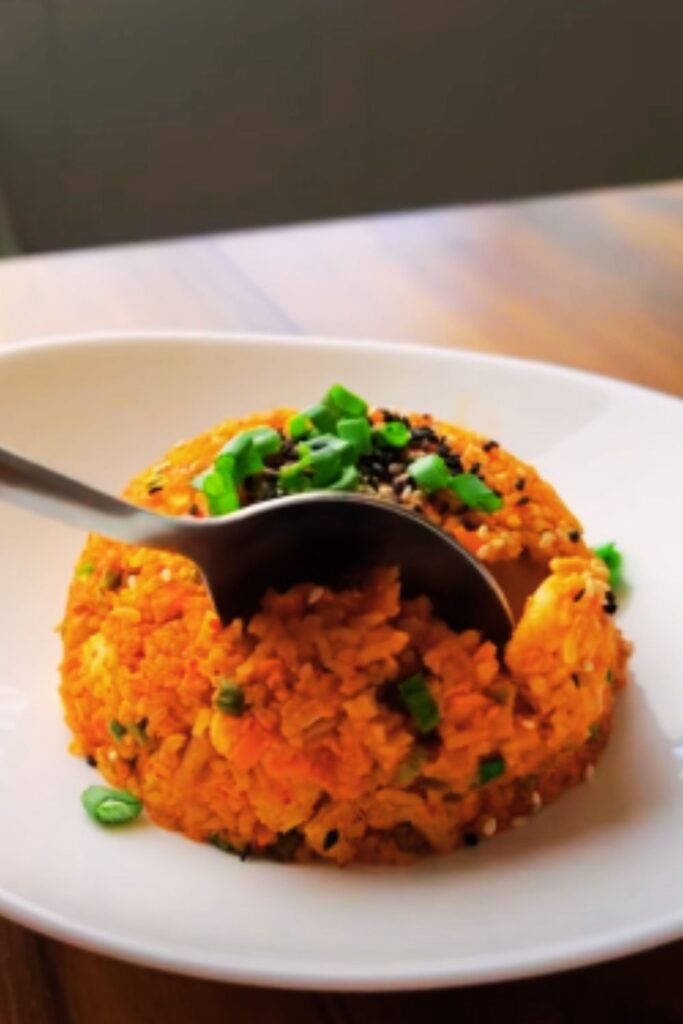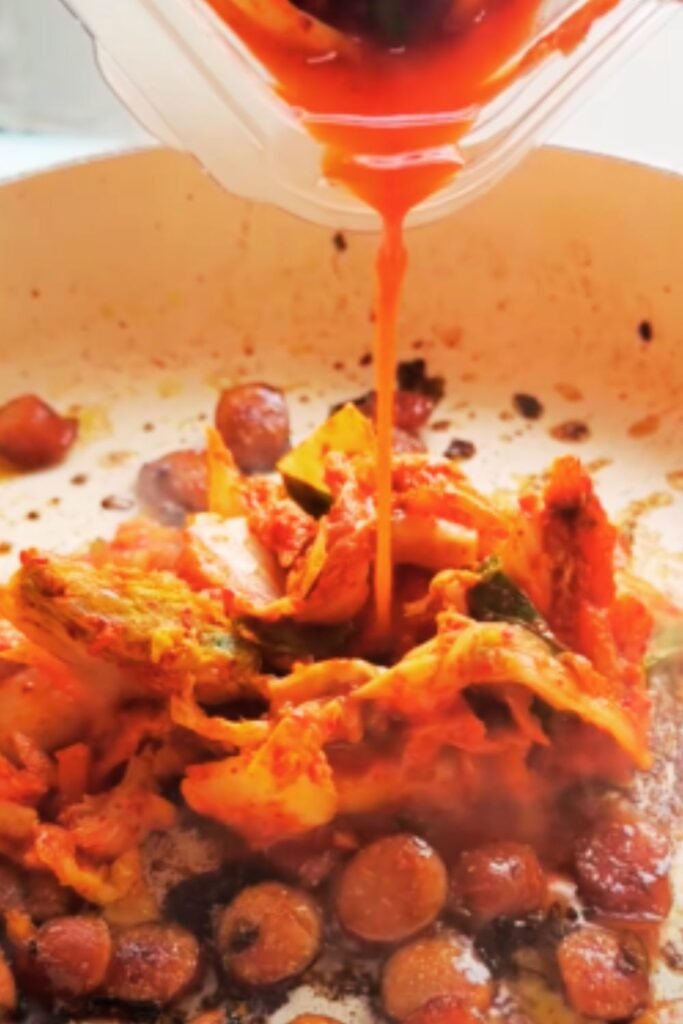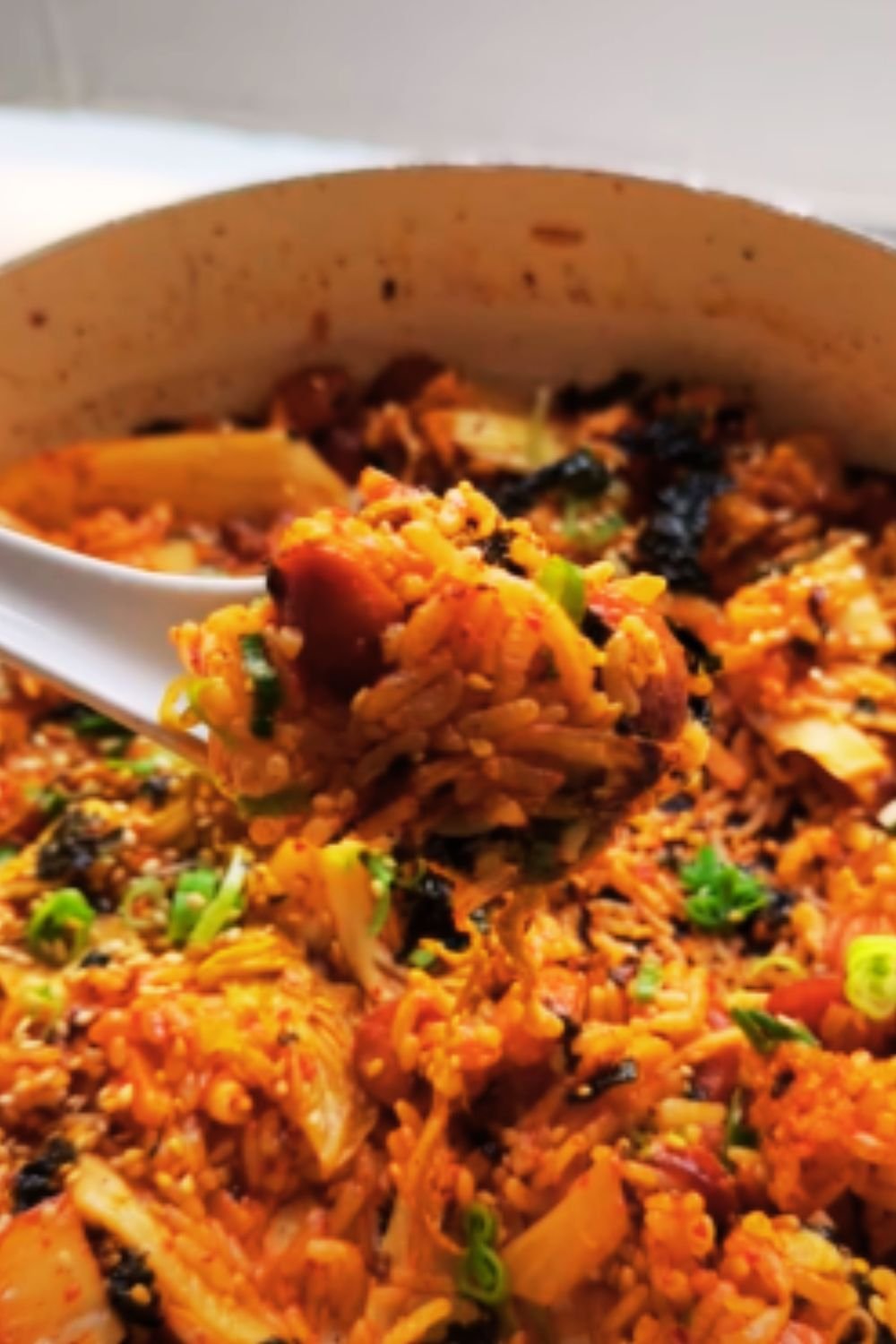There’s something magical about transforming day-old rice and fermented kimchi into a dish that’s greater than the sum of its parts. As someone who’s spent years perfecting this Korean comfort food classic, I’m excited to share my tried-and-true recipe for kimchi fried rice, or “kimchi bokkeumbap” as it’s known in Korean.
The Magic of Kimchi Fried Rice
The beauty of kimchi fried rice lies in its perfect balance of flavors and textures. The tangy, spicy kimchi meets fluffy rice and creates a harmonious blend that’s both satisfying and addictive. When topped with a perfectly runny fried egg, it becomes an unforgettable meal that’s suitable for any time of day.
Essential Ingredients

| Ingredient | Amount | Notes |
|---|---|---|
| Day-old cooked rice | 3 cups | Preferably medium-grain |
| Aged kimchi | 1½ cups | Chopped, with juice |
| Kimchi juice | 2-3 tablespoons | From the kimchi container |
| Bacon or spam | 4 oz | Diced (optional) |
| Yellow onion | 1 medium | Finely diced |
| Garlic | 4 cloves | Minced |
| Gochugaru | 1-2 teaspoons | Korean red pepper flakes |
| Sesame oil | 2 tablespoons | |
| Vegetable oil | 2 tablespoons | |
| Green onions | 3-4 stalks | Chopped |
| Eggs | 4 large | For topping |
| Roasted seaweed | 2 sheets | Crushed (optional) |
| Sesame seeds | 1 tablespoon | For garnish |
Kitchen Equipment Needed
| Equipment | Purpose |
|---|---|
| Large wok or skillet | Main cooking vessel |
| Wooden spatula | For stirring and breaking up rice |
| Sharp knife | For chopping ingredients |
| Measuring spoons | For accurate seasoning |
| Small skillet | For frying eggs |
| Cutting board | For preparation |
The Art of Preparation
Rice Selection and Preparation
The foundation of great kimchi fried rice starts with the right rice. I’ve learned that day-old rice works best because:
- The grains have had time to dry out slightly
- They separate more easily when stir-fried
- They absorb flavors better
- They’re less likely to become mushy
Kimchi Selection

The key to outstanding kimchi fried rice lies in using well-fermented kimchi. Here’s what to look for:
| Characteristic | Description |
|---|---|
| Age | 2-3 weeks minimum |
| Texture | Softer than fresh kimchi |
| Color | Deep red |
| Taste | Tangier and more complex |
| Aroma | Strong and developed |
Step-by-Step Cooking Process
- Heat your wok over medium-high heat and add vegetable oil
- Add diced bacon or spam (if using) and cook until crispy
- Add diced onions and cook until translucent (3-4 minutes)
- Add minced garlic and stir for 30 seconds
- Add chopped kimchi and stir-fry for 3-4 minutes
- Add day-old rice, breaking up any clumps
- Pour in kimchi juice and gochugaru
- Stir-fry everything together for 5-7 minutes
- Drizzle with sesame oil
- Top with fried eggs and garnishes
Pro Tips for Perfect Results
- Break up any rice clumps before adding to the wok
- Don’t overcrowd the pan
- Keep the heat medium-high throughout
- Let the rice develop a slight crust at the bottom
- Taste and adjust seasonings as you go
Serving Suggestions

Traditional Accompaniments
| Accompaniment | Description |
|---|---|
| Fried egg | Sunny-side up with runny yolk |
| Nori strips | Roasted seaweed, crushed |
| Sesame seeds | Toasted and sprinkled on top |
| Green onions | Freshly chopped |
| Banchan | Small side dishes |
Modern Variations
I’ve experimented with several modern twists that work wonderfully:
- Adding cheese on top
- Including different proteins (tofu, shrimp, chicken)
- Adding vegetables like corn or peas
- Using brown rice for a healthier option
- Adding mushrooms for extra umami
Nutritional Information
| Nutrient | Amount per Serving |
|---|---|
| Calories | 450 |
| Protein | 15g |
| Carbohydrates | 65g |
| Fat | 18g |
| Fiber | 4g |
| Sodium | 890mg |
Storage and Leftovers
| Storage Method | Duration | Notes |
|---|---|---|
| Refrigerator | 3-4 days | In airtight container |
| Freezer | 1-2 months | Without egg topping |
| Room temperature | Not recommended |
Troubleshooting Common Issues
| Problem | Solution |
|---|---|
| Rice too mushy | Use older rice, increase heat |
| Too spicy | Reduce gochugaru, add butter |
| Too dry | Add more kimchi juice |
| Not flavorful enough | Age kimchi longer, add more juice |
Q&A Section
Q: Can I use fresh rice instead of day-old rice?
A: While possible, fresh rice tends to be too moist and can become mushy. If you must use fresh rice, spread it on a baking sheet and let it dry for 30 minutes before using.
Q: How spicy should kimchi fried rice be?
A: The spice level is entirely customizable. Start with less gochugaru and add more to taste. Remember that aged kimchi is usually spicier than fresh.
Q: Can I make this dish vegetarian?
A: Absolutely! Skip the bacon and make sure to use vegetarian kimchi (some traditional kimchi contains fish sauce or shrimp paste).
Q: Why is my rice sticking together too much?
A: This usually happens with fresh rice or when the pan isn’t hot enough. Use day-old rice and maintain medium-high heat throughout cooking.
Q: How do I store leftover kimchi fried rice?
A: Store in an airtight container in the refrigerator for up to 4 days. Reheat in a pan with a little oil for best results.
Cultural Significance
Kimchi fried rice represents Korean cuisine’s ingenuity in transforming leftovers into crave-worthy dishes. It’s a perfect example of how fermented foods can elevate simple ingredients into complex, satisfying meals.
This dish has evolved from a humble home cooking solution to a beloved comfort food that’s enjoyed worldwide. Its popularity speaks to the growing appreciation for Korean cuisine and the universal appeal of well-balanced, flavorful one-bowl meals.
Remember, the best kimchi fried rice is the one that suits your taste preferences. Don’t be afraid to adjust the seasonings and ingredients to make it your own. After all, that’s how the best recipes evolve over time.


